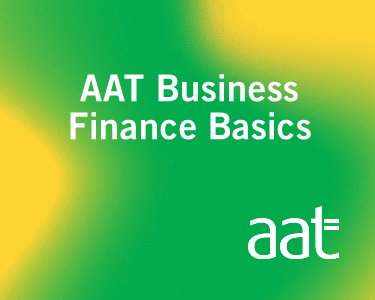If your business is registered for VAT, it’s worth knowing if you should join up for the Flat Rate Scheme. The scheme is intended to simplify the VAT process for qualifying businesses.
What is the VAT Flat Rate Scheme?
The Flat Rate Scheme is a simplified VAT scheme that is open to small businesses. Your business charges VAT to your customers in the usual way, but the amount of VAT your business needs to pay to HMRC is calculated as a flat percentage of your turnover (including VAT). Some businesses may be financially better off using the Flat Rate Scheme, while others may be better off sticking with the standard VAT scheme, where you pay the difference between VAT on sales and VAT on purchases.
Who can join the Flat Rate Scheme?
Any VAT-registered business can join the Flat Rate Scheme as long as its VAT taxable turnover is expected to be less than £150,000 (excluding VAT) in the next 12 months. Your business can’t rejoin the Flat Rate Scheme within 12 months of leaving. There are other exceptions too – these are listed on the GOV.UK website.
Should I join the Flat Rate Scheme?
This isn’t a simple question to answer and since the financial consequences are potentially significant, it’s important to get it right. Here are some pointers:
-
![Using a POS device]()
Expenses
If you use the Flat Rate Scheme, you can’t reclaim VAT on purchases except for certain capital assets over £2,000. As a result, the scheme works better for businesses that have few expenses (on which you can claim VAT) compared to their turnover, and worse for those who buy a lot of standard-rated items.
-
![Close up of working on computer]()
Identifying rates
Different business sectors are required to pay different flat rates of VAT under the scheme. You’ll need to identify which rate applies to you when working out whether the Flat Rate Scheme is right for you. For example, a business charges VAT of £20,000 on total sales of £100,000. If the business pays VAT at a flat rate of 11% of turnover (including VAT), it would pay VAT of 11% x £120,000 = £13,200 under the Flat Rate Scheme. So, if the business could reclaim more than £6,800 VAT from purchases it would be better off remaining in the standard VAT scheme.
-
![Printing a receipt]()
Zero-rated or exempt sale
You should definitely speak to an expert if your business makes a lot of zero-rated or exempt sales, or if it has overseas customers and suppliers – these can all make the Flat Rate Scheme quite complicated.
What flat rate of VAT will I pay?
The VAT rate you pay to HMRC depends on your business type. Examples include IT consultancy (14.5%), hairdressing (13%), property management services (12%) and manufacturing food (9%).
For a limited cost business the flat rate percentage is 16.5%, regardless of the sector they work in. A limited cost business is a business which spends either: a) less than 2% of their VAT flat rate turnover, or b) greater than 2% of their flat rate turnover, but less than £1,000 per annum (£250 per quarter) on relevant goods (including VAT). Relevant goods are those used exclusively for business purposes and exclude:
- vehicle costs
- food or drink
- capital expenditure
- services (for example, accountancy)
- goods for resale (outside the main activity of the business).
Use the GOV.UK tax tool to identify if your business is classed as a limited cost business.
Let’s assume a business has historically been using the flat rate scheme and has used a 12% rate. On a £500 (standard rate) net invoice, he would charge his customer £600 (£500 + 20%) and would apply the flat rate percentage to this. This would give him VAT payable of £72, which means of the £100 paid to him, by his customer, only £72 is making its way to HMRC. Let’s now assume that this business is deemed to be a limited cost trader from April the next tax year. Of the £600 he receives, he would now apply a flat rate percentage of 16.5% giving him a liability of £99. This almost completely diminishes the benefit of this trader being in the flat rate scheme especially taking into account that any VAT that he would be able to claim back under the normal scheme is not claimable under the flat rate scheme.
A list of business sectors can also be found on the GOV.UK website (this also applies to a limited cost business).
Take time to choose the correct sector. The VAT Helpline can be reached by calling 0300 200 3700 and should be able to help if your sector isn’t listed.
Remember that the the VAT amount payable is calculated by applying the flat rate percentage to the total turnover (including VAT). In your first year as a VAT-registered business the rate is reduced by 1% until the day before your registration anniversary.
How do I apply to join the Flat Rate Scheme?
You can join the Flat Rate Scheme if:
- you’re a VAT registered business
- you expect your VAT taxable turnover to be £150,000 or less (excluding VAT) in the next 12 months.
You can join the scheme online (when you register for VAT) or by post by completing form VAT600FRS located on the GOV.UK website.
We’d recommend that you talk to your accountant to assess the advantages and disadvantages for your business before joining.
Share this content

Brought to you by:
Sage
Sage Business Cloud Accounting is online accounting software that provides anytime, anywhere access to essential small business tools. Its features help you manage cash flow and send and track invoices, all through the cloud or via a mobile app.
Get limited time offer












